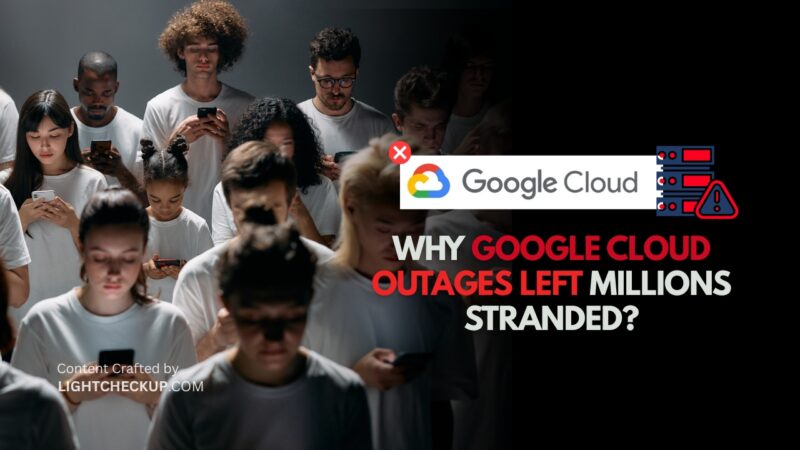On June 12, 2025, massive Google Cloud Outages disrupted dozens of popular services and exposed how fragile cloud infrastructure is.
Globally, millions of users were impacted, including Spotify, Snapchat, and Replit. This incident, rooted in a technical failure within Google Cloud, serves as a stark reminder of how interconnected and vulnerable our online ecosystem has become.
Google Cloud Outages and Its Impact
Timeline
The disruption started around 1:51 PM ET. Downdetector noted a sharp rise in reports of Google services failing. Thousands of users also flagged issues with third-party apps. Social media buzzed with frustration.
Many reported inability to access Gmail, YouTube, and Google Drive. The outage spread quickly, impacting businesses and individuals alike.
Affected Services
Google Cloud outages impacted not just Google’s own offerings—such as Google Search, Gmail, and the Google Cloud Console—but also platforms leveraging GCP (Google Cloud Platform).
As soon as the disruption peaked, Downdetector logged over 14,000 reports for Google Cloud down, 46,000 for Spotify, and 11,000 for Discord. These figures likely underestimate the full scope of the GCP outage.
Cloudflare’s Involvement
The ripple effect didn’t stop there. Cloudflare, a key player in internet stability, reported partial disruptions due to its reliance on Google Cloud for some services. A Cloudflare status update clarified, “This is a Google Cloud outages.
A limited number of services at Cloudflare use GCP and were impacted.” Fortunately, Cloudflare down wasn’t a widespread issue, as their core infrastructure held firm.
Meanwhile, confusion swirled around AWS down rumors, with Downdetector showing elevated reports, though Amazon later confirmed their systems were unaffected.
User Reactions
Social media, particularly X, buzzed with frustration. Users posted about everything from YouTube down? queries to outright panic: “Much of the internet is broken—Google outage, Snapchat, Cloudflare, Spotify, all down!”
A single GCP down event had a global impact, affecting entertainment, communication, and productivity.
Google’s Response and Resolution
Identifying the Root Cause
The Google Cloud status page logged the issue at 12:41 PM PT, noting that engineers had pinpointed the root cause—a technical glitch in GCP infrastructure.
Restoring Services
Most regions were restored by 1:16 PM PT, but us-central1 was lagging. Google Cloud outages were declared resolved by 6:18 PM PT, including for Vertex AI services.
Post-Mortem and Prevention
Google later apologized, promising a detailed post-mortem to dissect the Google Cloud outages and prevent future incidents.
Read Also: Cellcom outage: Why are customers’ phone and text services down?
Lessons Learned: The Fragility of Our Digital Infrastructure
This wasn’t an isolated hiccup. Past disruptions—like the 2021 AWS outage or Fastly’s 2021 breakdown—echo the same lesson: our internet depends heavily on a handful of cloud giants. When Google Cloud down or Cloudflare down occurs, the fallout is immediate and far-reaching.
The outage affected businesses, developers, and everyday users, with platforms like Replit struggling.
Cloud Dependence and Its Risks
The June 12 Google outage highlights the urgent need for resilient, diversified cloud systems. As more services migrate to GCP and similar platforms, a single point of failure can paralyze the digital world.
The Need for Diversification and Resilience
Some companies may need to rethink redundancies, while users may demand greater transparency from service providers Google Cloud and Cloudflare.
Read Also: Google I/O 2025: A Recap of Google’s Biggest Event
Moving Forward: Building a Stronger Internet
In the end, the Google Cloud outages of June 12, 2025, were a wake-up call. Resolved within hours, yes—but not without exposing cracks in our internet infrastructure.
As Google investigates and the dust settles, one thing is clear: the next GCP outage or Cloudflare status blip could be just around the corner unless we bolster the systems holding our online lives together.








